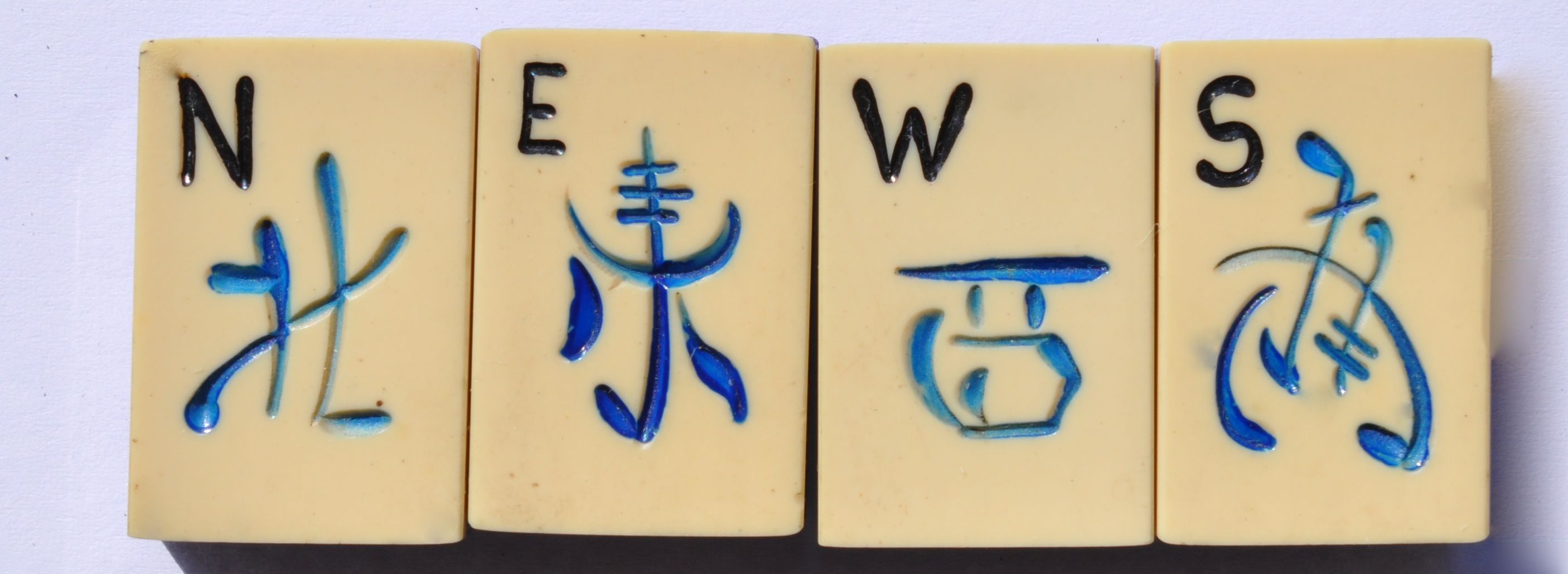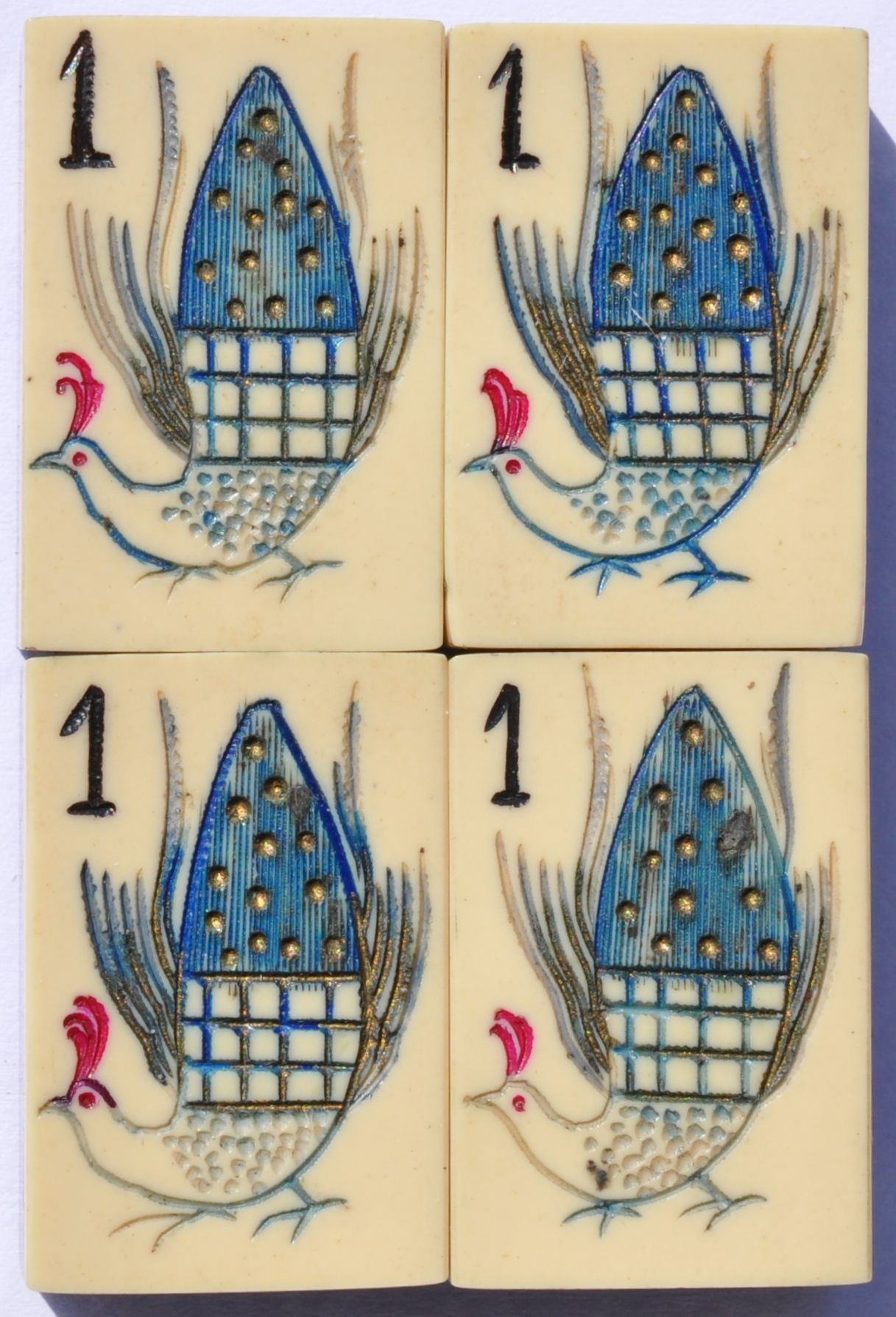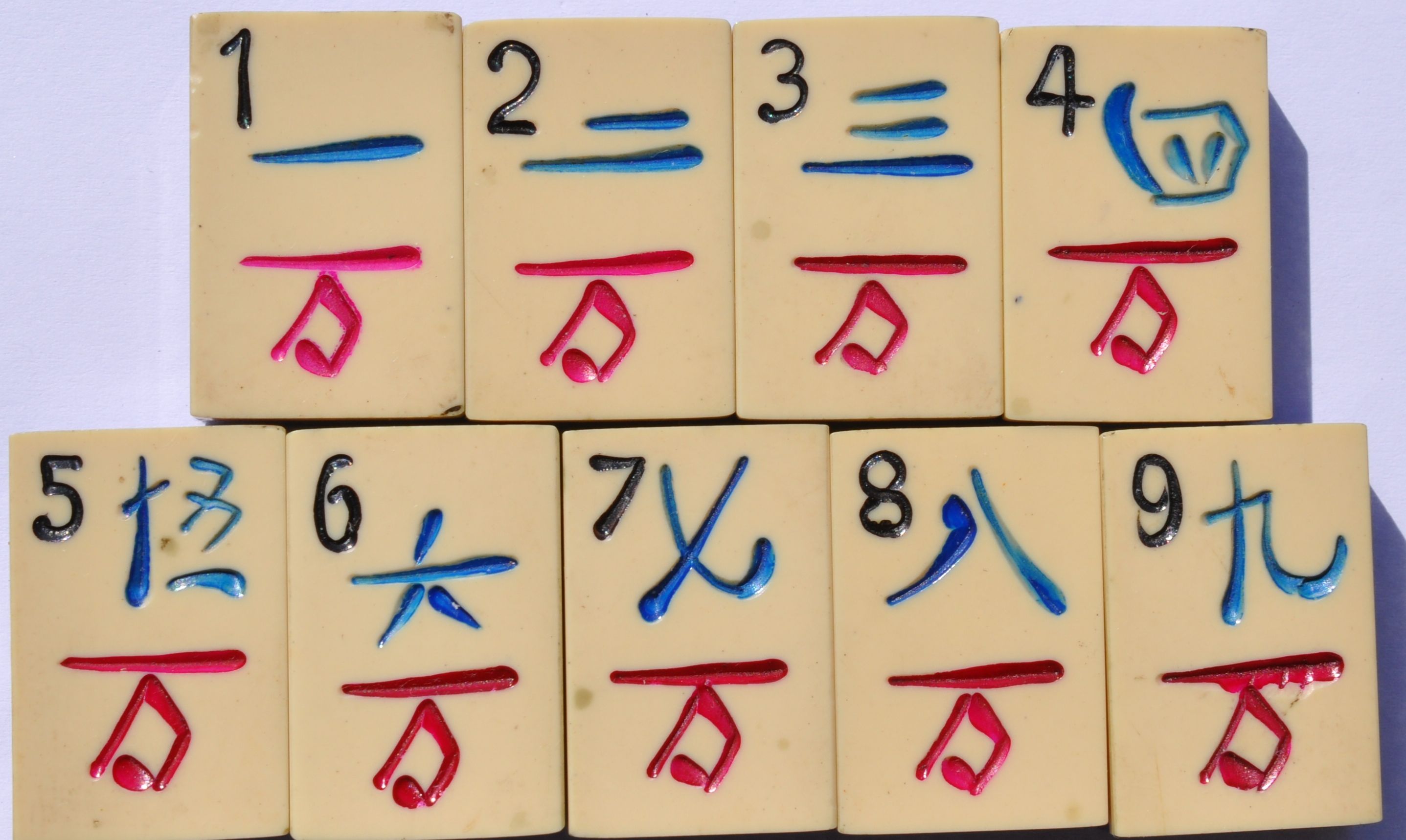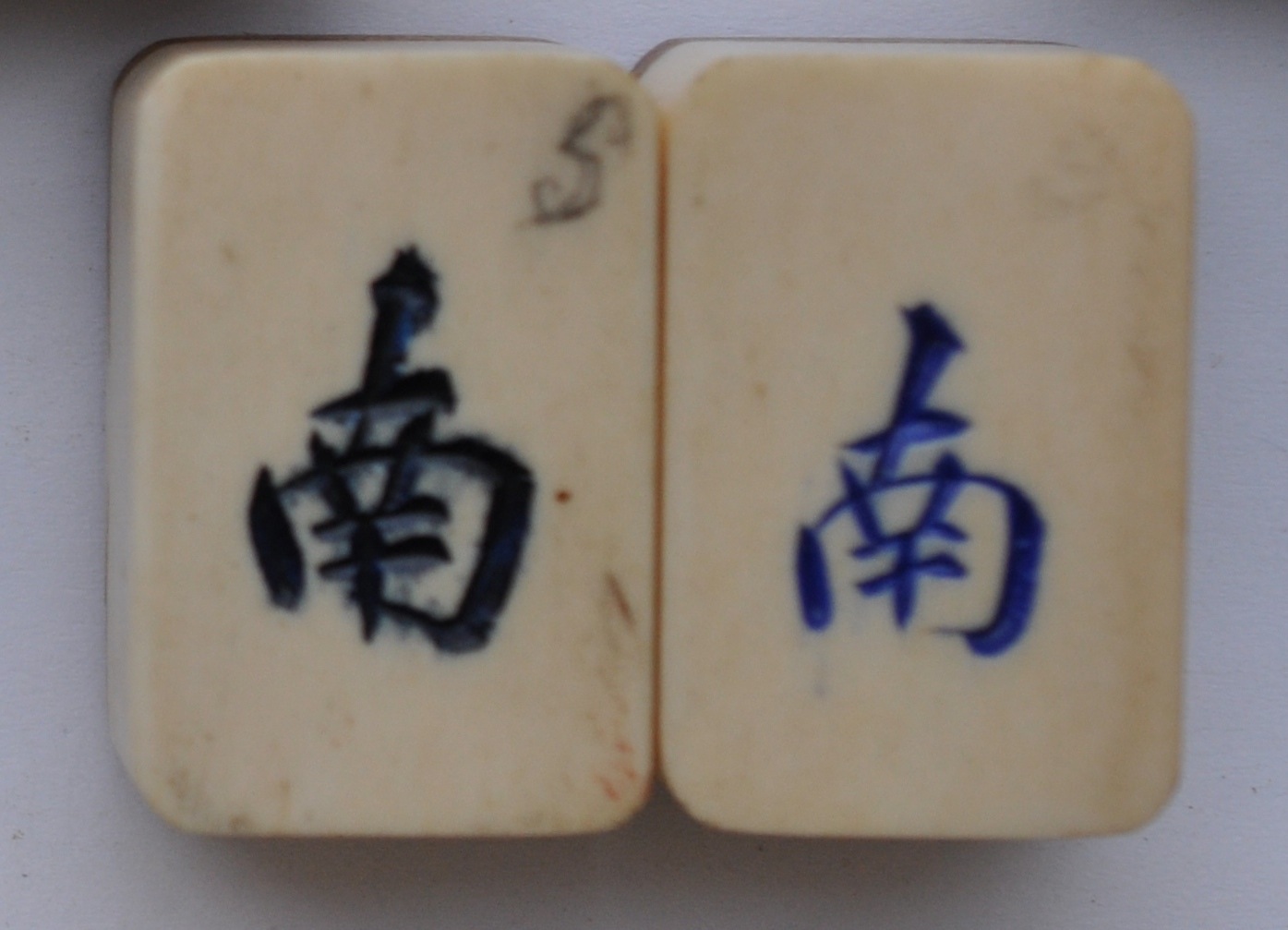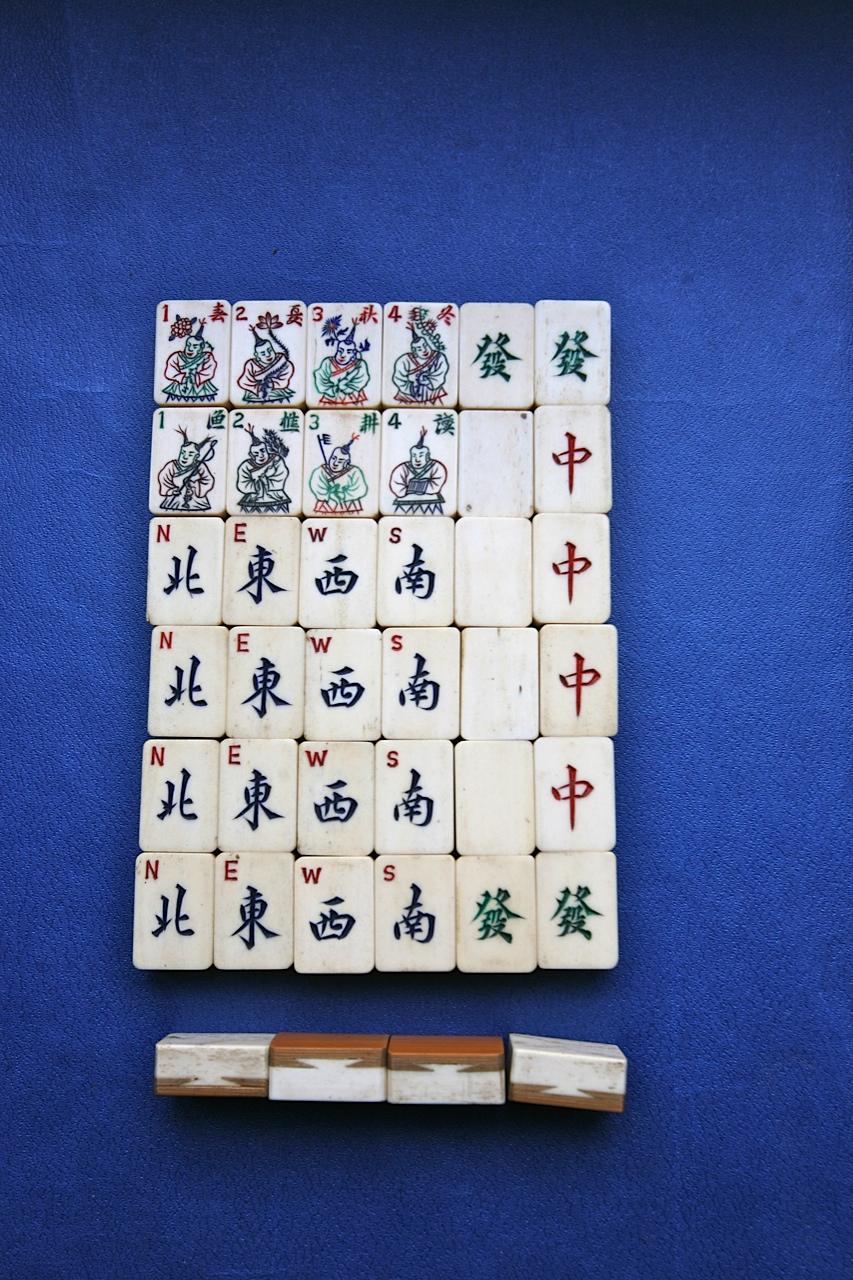The other day we featured the backside of the "Tibetan" Mahjong rack. (click here to see that post) Today we see the side that faces the player. These are also bone discs, with images representing the 12 year Chinese cycle. The Chinese New Year actually starts sometime in January or February, the second new moon after the winter solstice, so if your birthday is in either of those two months you may fall into the previous animal sign. There are personality traits that fall into each year. The following has been taken from the online version of the Old Farmer's Almanac.
The front side of the Tibet racks have lovely small bone inlays, each for a year on the Chinese calendar.

Here are closeups of all the years:

The Goat sometimes known as the Sheep
Year of the Goat: 1931, 1943, 1955, 1967, 1979, 1991, 2003
Aesthetic and stylish, you enjoy being a private person. Compatible with the pig and the rabbit. Your opposite is the ox.

The Monkey
The year of the Monkey: 1920, 1932, 1944, 1956, 1968, 1980, 1992, 2004
Persuasive, skillful, and intelligent, you strive to excel. Compatible with the dragon and the rat. Your opposite is the tiger.

The Rooster or Cock
Year of the Rooster: 1921, 1933, 1945, 1957, 1969, 1981, 1993, 2005
Seeking wisdom and truth, you have a pioneering spirit. Compatible with the snake and the ox. Your opposite is the rabbit.

The Dog
Year of the Dog: 1922, 1934, 1946, 1958, 1970, 1982, 1994, 2006
Generous and loyal, you have the ability to work well with others. Compatible with the horse and the tiger. Your opposite is the dragon.

The Pig or Boar
Year of the Pig: 1923, 1935, 1947, 1959, 1971, 1983, 1995, 2007
Gallant and noble, your friends will remain at your side. Compatible with the rabbit and the sheep/goat. Your opposite is the snake.

The Rat
Year of the Rat:1924, 1936, 1948, 1960, 1972, 1984, 1996, 2008
Ambitious and sincere, you can be generous with your money. Compatible with the dragon and the monkey. Your opposite is the horse.

The Ox or Buffalo
Year of the Ox: 1925, 1937, 1949, 1961, 1973, 1985, 1997, 2009
A leader, you are bright, patient, and cheerful. Compatible with the snake and the rooster. Your opposite is the sheep.

The Tiger
Year of the Tiger: 1926, 1938, 1950, 1962, 1974, 1986, 1998, 2010
Forthright and sensitive, you possess great courage. You have the ability to be a strong leader capable of great sympathy. Compatible with the horse and the dog. Your opposite is the monkey.

The Rabbit or Hare
Year of the Rabbit: 1927, 1939, 1951, 1963, 1975, 1987, 1999, 2011
Talented and affectionate, you are a seeker of tranquility. Compatible with the sheep and the pig. Your opposite is the rooster.

The Dragon
Year of the Dragon: 1928, 1940, 1952, 1964, 1976, 1988, 2000, 2012
Robust and passionate, your life is filled with complexity. Compatible with the monkey and the rat. Your opposite is the dog.

The Snake
Year of the Snake: 1929, 1941, 1953, 1965, 1977, 1989, 2001, 2013
Strong-willed and intense, you display great wisdom. Compatible with the rooster and the ox. Your opposite is the pig.

The Horse
Year of the Horse: 1930, 1942, 1954, 1966, 1978, 1990, 2002, 2014
Physically attractive and popular, you like the company of others. Compatible with the tiger and the dog. Your opposite is the rat.
To learn more about the Chinese years and qualities associated with each one
Click here


